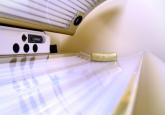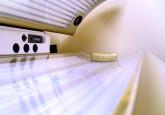Article

Dr. Nergard-Martin was from and Dr. Solomon is from the College of Medicine, University of Central Florida, Orlando. Dr. Nergard-Martin currently is from the Department of Internal Medicine, Baylor College of Medicine, Houston. Dr. Solomon also is from Ameriderm Research, Ormond Beach, Florida, and the College of Medicine, University of Illinois, Urbana. Drs. Caldwell and Dellavalle are from the Department of Dermatology, University of Colorado Anschutz Medical Campus, Aurora.
Dr. Dellavalle also is from the Dermatology Service, US Department of Veterans Affairs, Washington, DC; Eastern Colorado Health Care System, Denver; and the Department of Epidemiology, Colorado School of Public Health, Aurora. Dr. Barr is from Cedars-Sinai Medical Center, Los Angeles, California.
The authors report no conflict of interest.
Dr. Dellavalle is employed by the US Department of Veterans Affairs. Any opinions expressed in this paper do not officially represent any positions of the US government.
The eTable is available in the Appendix in the PDF.
Correspondence: Jennifer Nergard-Martin, MD, 1911 Holcombe Blvd, Houston, TX 77030 (jcnergard@knights.ucf.edu).

Of the 454 participants who accessed the survey, 448 were analyzed in this study; 6 participants did not complete the questionnaire. Both males and females were analyzed: 289 females, 12 males, and 153 who did not report gender. The age range of participants was 18 to 69 years. The age at start of indoor tanning ranged from 8 to 54 years, with a mean of 22 years. Additional participant characteristics are described in Table 1. The mean frequency of indoor tanning was reported as 2 times weekly. When participants were asked if they were warned of the risk of skin cancer, 21.5% reported yes while 78.4% reported not being told of the risk. This knowledge was compared to their frequency of indoor tanning. Having the knowledge of the risk of skin cancer had no influence on their frequency of indoor tanning (Table 2).
Among responders, those who perceived indoor tanning as safer than outdoor tanning tanned indoors more frequently than those who do not (Spearman r=−0.224; P<.05)(Table 3). The frequency of indoor tanning was divided into those who tanned indoors more than once weekly and those who tanned indoors once a week or less. This study showed that the frequency of indoor tanning had no effect on the latency time between the commencement of indoor tanning and diagnosis of melanoma (Table 4). The time frame from the onset of melanoma diagnosis also was compared to the age at which the participants started to tan indoors. Age was divided into those younger than 35 years and those 35 years and older. There was no correlation between the age when indoor tanning began and the time frame in which the melanoma was diagnosed (eTable).
Table 5 shows the correlations between indoor tanning behaviors and melanoma characteristics. Those who started indoor tanning at an earlier age were diagnosed with melanoma at an earlier age compared to those who started indoor tanning later in life (r=0.549; P<.01). Moreover, those who started indoor tanning at a later age reported being diagnosed with a melanoma of greater Breslow depth (r=0.173; P<.01). Those who reported being diagnosed with a greater Breslow depth also reported a higher Clark level (r=0.608; P<.01). Among responders, those who more frequently tanned indoors also reported greater frequency of outdoor tanning (r=0.197; P<.01). This study showed no correlation between the age at melanoma diagnosis and the frequency of indoor (r=0.004; P>.05 not significant) or outdoor (r=0.093; P>.05 not significant) tanning. Having the knowledge of the risk of skin cancer had no relationship on the frequency of indoor tanning (r=−0.04; P>.05 not significant).


UV radiation is an important environmental risk factor for cutaneous melanoma; however, information concerning UV exposure in many populations is...
